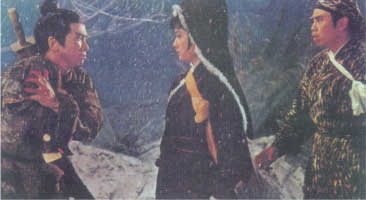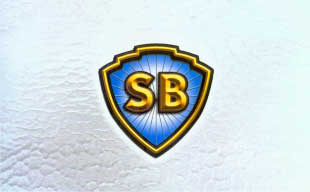



At the end of one of Shaw’s last films, Eight Diagram Pole Fighter (Liu:1984) the hero wanders off into the sunset claiming he has lost his place in the world. This self-reflective scene seems to acknowledge that by 1984, Shaw Brothers had completely lost their market and by 1985 they stopped production forever.
This work has explored the unique rise and fall of a studio, emphasising the chain of significant events which shaped Hong Kong cinema and explaining Shaw Brothers importance in film history. Each chapter has explored key moments from 1957 to 1985, identifying how Shaw Brothers came to power and subsequently lost their dominance. For instance Chapter 1 looked at the late 1960s where Shaw Brothers consolidated power. Through production line methods, Shaw could mass produce popular films to defeat slower competition. No other rivals had the money or star power to match these films that exploited the violence in society through realistic aesthetics and self-sacrificing heroes. King Hu’s Peking Opera traditions had given the martial arts genre visual sophistication and Chang Cheh had rejuvenated the genre with gritty realism. Shaw Brothers in their early stages were incredibly astute to the market being able to spot international trends like the growing popularity of the action film and reinvent it in a Chinese form.

Yet as Chapter 2 demonstrates, Shaw Brothers faced their biggest challenge with Golden Harvest and Bruce Lee. Despite practically creating the craze for martial arts films in the 70s, issues such as losing Raymond Chow and not being able to sign Lee clearly left an impact and were the first signs that the industry giant could be faulted. Through localised independent companies, stars like Lee could update the genre for modern times and replace actors who mimic martial arts moves for genuinely trained fighters. Shaw’s violent self sacrificing hero was less relevant in calmer times, replaced by Lee’s rebellious hard bodied youth; a martyr for modern Chinese pride and respect.
As Chapter 3 concludes, the rise of Cantonese cinema marked the return of a local voice represented by Jackie Chan whose heroes spoke directly to the Hong Kong audience instead of the generic universality of Shaw’s attempt to appeal to International markets and its generic Chinese studio style stories. While the company had once been a frontrunner for new exciting aesthetics and genre’s, new companies with smaller overheads and local talent could easily outpace the large studio. Losing touch with the modern market by recycling older narratives featuring violent self-sacrificing heroes from the 1960s, Shaw Brothers had lost their dominance to “flexible” local companies who could easily adapt to changes in the industry. It became impossible for a studio like Shaw Brothers to run in this market.

Though despite their fall, Shaw Brothers have
left a lasting impression in Hong Kong and indeed world cinema. Their films
such as The One Armed Swordsman and Come Drink With
Me are rightly recognised as genre making classics and directors
such as Chang Cheh set in motion the need for realistic aesthetics of martial
arts, paving the way for stars like Bruce Lee and Jackie Chan to develop
and shape a unique industry. Shaw Brothers influence and trend setting
of the late 60s have enabled the creation and development of a powerful
Hong Kong cinema.
· The 72 Tenants (Chor Yuen: Hong Kong
1973)
· 5 Shaolin Masters (Chang Cheh: Hong
Kong 1974)
· The Big Boss (Lo Wei: Hong Kong 1971)
· The Boxer from Shantung (Chang Cheh:
Hong Kong 1972)
· The Chinese Boxer (Wang Yu: Hong Kong
1971)
· Come Drink With Me (King Hu: Hong Kong
1966)
· Drunken Master (Yuen Woo-ping: Hong
Kong 1978)
· Fist of Fury (Lo Wei: Hong Kong 1972)
· The Heroic Ones (Chang Cheh: Hong Kong
1970)
· King Boxer (Jeong Chang-hwa: Hong Kong
1973)
· Legendary Weapons of China (Liu Chia-liang:
Hong Kong 1982)
· The Love Eterne (Han Hsiang Li: Hong
Kong 1963)
· The Master (Lu Chin-ku: Hong Kong 1980)
· The One Armed Swordsman (Chang Cheh:
Hong Kong 1967)
· Police Story (Jackie Chan: Hong Kong
1985)
· Project A (Jackie Chan: Hong Kong 1983)
· Shaolin Temple (Chang Cheh: Hong Kong
1976)
· Snake in Eagle Shadow (Yuen Woo-ping:
Hong Kong 1978)
· Two Champions of Shaolin (Chang Cheh:
1978)
· Vengeance! (Chang Cheh: Hong Kong 1970)
· Way Of The Dragon (Bruce Lee: Hong Kong
1972)
· Wong Fei-hung (TV series, Various: Hong
Kong 1955)
· Yojimbo (Akira Kurosawa: Japan 1962)
· Young Master (Jackie Chan: Hong Kong
1980)
BIBLIOGRAPHY
· Bordwell, D. (2000a) Planet Hong Kong Harvard University Press
· Bordwell, D. ‘Richness through Imperfection’ in Desser, D. (2000b) Cinema of Hong Kong: History, Arts, Identity Cambridge University Press
· Chan, J. (1999) I Am Jackie Chan Ballantine Books
· Chung, P. ‘The Industrial Evolution of a Fraternal Enterprise’ in Ain-Ling, W. (2003) The Shaw Screen Hong Kong Film Archive
· Fu, P. ‘Modernity, Youth Culture and Hong Kong Cantonese Cinema’ in Desser, D. (2000) Cinema of Hong Kong: History, Arts, Identity Cambridge University Press
· Ho, S. ‘One Jolts, the Other Orchestrates’ in Ain-Ling, W. (2003) The Shaw Screen, Hong Kong Film Archive
· Kei, S. ‘Shaw Movie Town's 'China Dream' and 'Hong Kong Sentiments'’ in Ain-Ling, W. (2003) The Shaw Screen, Hong Kong Film Archive
· Lau, T. ‘Conflict And Desire’ in Leung, R. (1999) The Making of Martial Arts Films Hong Kong Film Archive
· Lui, T. ‘Intrigue Is Hard to Defend’ in Ain-Ling, W. (2003) The Shaw Screen, Hong Kong Film Archive
· Teo, S. (1997) Hong Kong: The Extra Dimensions BFI Publishing
· Teo, S. (2002) ‘Movement and Transition’ in Desser, D. (2000) Cinema of Hong Kong: History, Arts, Identity Cambridge University Press
· Teo, S. (2003) ‘Shaw's Wuxia Films’ in Ain-Ling, W. (2003) The Shaw Screen, Hong Kong Film Archive
· Zhang, C. ‘Creating The Martial Arts Film’ in Leung, R. (1999) The Making of Martial Arts Films Hong Kong Film Archive
· Zhang, Y. (2004) Chinese National
Cinema Routledge
